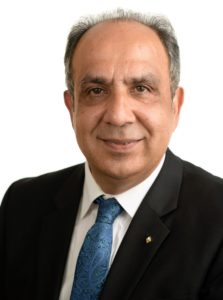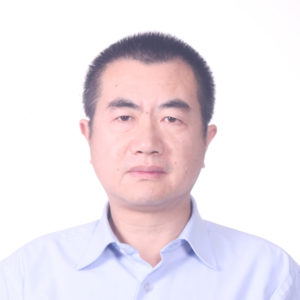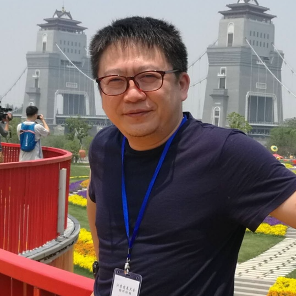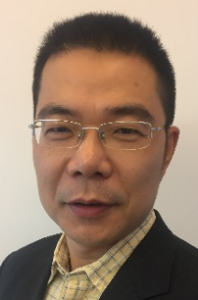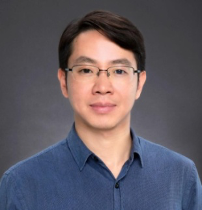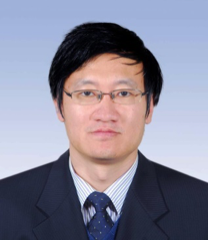Below are the Keynote Speakers confirmed for the IEEE/CIC ICCC 2020 conference:
Abstract: Fifth Generation Cellular Networks (5G) is gradually being implemented around the world, while at the same time research on the next generation or 6G has already been started. Although it would take some time before we get the full picture of credibility of 5G, researchers already know that it would suffer from a range of shortcoming with the introduction of new applications and thus; the need for work on its successor 6G. What we know and expect at this time is that we still need to make users closer to the network edges, thus the inclusion of edge computing; and that we need more autonomous and intelligent techniques in the form of advanced machine learning and artificial intelligence. At the same time, we know that terrestrial network components will have fundamentally physical limitations in providing coverage and accessibility needed in future networks. That would bring the involvement of more of aerial support including drones and low earth orbit satellites. This talk will provide some visionary concepts of the future mobile networks that contemplate edge computing and aerial support using results from some existing intelligent techniques.
Biography: Abbas Jamalipour is the chair Professor of Ubiquitous Mobile Networking at the University of Sydney, Australia, and holds a PhD in Electrical Engineering from Nagoya University, Japan. He is a Fellow of the Institute of Electrical and Electronics Engineers (IEEE), the Institute of Electrical, Information, and Communication Engineers (IEICE), and the Institution of Engineers Australia (IEA), an ACM Professional Member, and an IEEE Distinguished Speaker. He has authored nine technical books, eleven book chapters, over 550 technical papers, and five patents, all in the field of wireless communications. Dr. Jamalipour is the President and an elected member of the Board of Governors of the IEEE Vehicular Technology Society. He was the Editor-in-Chief IEEE Wireless Communications, Vice President-Conferences and a member of Board of Governors of the IEEE Communications Society. He serves as an Editor of IEEE Access, IEEE Transactions on Vehicular Technology, and several other journals. He has been a General Chair or Technical Program Chair for a number of conferences, including IEEE ICC, GLOBECOM, VTC, WCNC and PIMRC. He is the recipient of a number of prestigious awards such as the 2019 IEEE ComSoc Distinguished Technical Achievement Award in Green Communications, the 2016 IEEE ComSoc Distinguished Technical Achievement Award in Communications Switching and Routing, the 2010 IEEE ComSoc Harold Sobol Award, the 2006 IEEE ComSoc Best Tutorial Paper Award, as well as over fifteen Best Paper Awards.
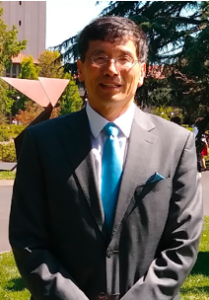 . . |
Title: Match-Making for Massive MIMO and Deep Learning
Prof. Zhi Ding, IEEE Fellow University of California at Davis, USA https://www.ece.ucdavis.edu/~zding/
|
Abstract: The proliferation of advanced wireless services, such as virtual reality, autonomous driving and internet of things has generated increasingly intense pressure to develop intelligent wireless communication systems to meet networking needs posed by extremely high data rates, massive number of connected devices, and ultra low latency. Deep learning (DL) has been recently emerged as an exciting design tool to advance the development of wireless communication system with some demonstrated successes. In this talk, we introduce the principles of applying DL for improving wireless network performance by integrating the underlying characteristics of channels in practical massive MIMO deployment. We develop important insights derived from the physical RF channel properties and present a comprehensive overview on the application of DL for accurately estimating channel state information (CSI) of forward channels with low feedback overhead. We provide examples of successful DL application in CSI estimation for massive MIMO wireless systems and highlight several promising directions for future research.
Biography: Dr. Zhi Ding (S’88-M’90-SM’95-F’03, IEEE) is a Professor of Electrical and Computer Engineering at the University of California, Davis. He received his Ph.D. degree in Electrical Engineering from Cornell University in 1990. From 1990 to 2000, he was a faculty member of Auburn University and later, University of Iowa. Prof. Ding has held visiting positions in Australian National University, Hong Kong University of Science and Technology, NASA Lewis Research Center and USAF Wright Laboratory. His major research interests lie in the general field of signal processing and communications. Prof. Ding has active collaboration with researchers from many universities including those in Australia, China, Finland, Japan, Canada, Korea, and Singapore. He has coauthored over 400 technical papers and two books. Dr. Ding is a coauthor of the text: Modern Digital and Analog Communication Systems, 4th edition and 5th edition, Oxford University Press.
Dr. Ding is a Fellow of IEEE and has been an active member of IEEE, serving on technical programs of several workshops and conferences. He served both as a Member and also the Chair of the IEEE Transactions on Wireless Communications Steering Committee from 2007-2001. Dr. Ding was the Technical Program Chair of the 2006 IEEE Globecom and the General Chair of the 2016 IEEE International Conference on Acoustics, Speech and Signal Processing (ICASSP). He served as an IEEE Distinguished Lecturer (Circuits and Systems Society, 2004-06, Communications Society, 2008-09). He received the 2012 Wireless Communications Recognition Award from the IEEE Communications Society. He currently also serves as the Chief Information Officer of the IEEE Communications Society.
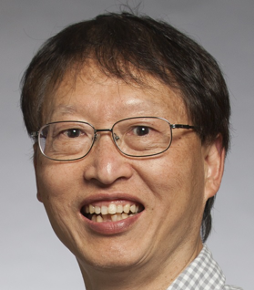 . . |
Title: Mobile Edge Joint Exploration of Big IoT Data for Smart City Applications
Prof. Jenq-Neng Hwang, IEEE Fellow University of Washington, USA https://people.ece.uw.edu/hwang/ |
Abstract: Thanks to the ultra-reliable low-latency communication (URLLC) capability of the emergent 5G mobile networks, the information derived from the roadside static surveillance or on-board moving IoT sensors (e.g., video cameras, Radars and Lidars), which can be jointly explored by the mobile edge computing (MEC) and real-time shared by all the local connected users for various smart city applications. To achieve this goal of coordinated mining of different modalities of IoT data, all of the detected/segmented and tracked human/vehicle objects need to be 3D localized in the world coordinate for effective 3D understanding of local dynamic evolutions. In this talk I will mainly talk about some challenges and potential solutions, more specifically, a robust tracking and 3D localization of detected objects, from either static/moving monocular video cameras, is proposed based on a variant of the Cascade R-CNN detector trained with triplet loss to obtain the accurate localization and the corresponding discriminating identity-aware features for tracking association, even with long-term occlusion, of each detected object in one-shot. When the cameras fail to reliably achieve these tasks due to poor lighting or adverse weather conditions, Radars and Lidars can offer more robust localization than the monocular cameras. However, the semantic information provided by the radio or point cloud data is limited and difficult to extract. In this talk, I will also introduce a radio object detection network (RODNet) to detect objects purely from radio signals captured by Radar based on an innovative cross-modal supervision framework, which utilizes the rich information extracted from the camera to teach object detection for Radar without tedious and laborious human labelling of ground truth on the Radar signals. Moreover, to compensate the disadvantage of Lidar detection on far-away small objects, effective integration of Lidar based detections, along with 2D object detections and 3D localization from monocular images based on 3D tracking associations, to achieve superior tracking and 3D localization performance. Finally, an efficient 3D human pose estimation for action description of detected human in natural monocular videos is also presented for finer-grained 3D scene understanding for smart city applications.
Biography: Dr. Jenq-Neng Hwang received the BS and MS degrees, both in electrical engineering, in 1981 and 1983 separately. He then received his Ph.D. degree from the University of Southern California. In the summer of 1989, Dr. Hwang joined the Department of Electrical and Computer Engineering (ECE) of the University of Washington in Seattle, where he has been promoted to Full Professor since 1999. He served as the Associate Chair for Research from 2003 to 2005, and from 2011-2015. He also served as the Associate Chair for Global Affairs from 2015-2020. He is the founder and co-director of the Information Processing Lab., which has won CVPR AI City Challenges awards in the past years. He has written more than 380 journal, conference papers and book chapters in the areas of machine learning, multimedia signal processing, and multimedia system integration and networking, including an authored textbook on “Multimedia Networking: from Theory to Practice,” published by Cambridge University Press. Dr. Hwang has close working relationship with the industry on multimedia signal processing and multimedia networking.
Dr. Hwang received the 1995 IEEE Signal Processing Society’s Best Journal Paper Award. He is a founding member of Multimedia Signal Processing Technical Committee of IEEE Signal Processing Society and was the Society’s representative to IEEE Neural Network Council from 1996 to 2000. He is currently a member of Multimedia Technical Committee (MMTC) of IEEE Communication Society and also a member of Multimedia Signal Processing Technical Committee (MMSP TC) of IEEE Signal Processing Society. He served as associate editors for IEEE T-SP, T-NN and T-CSVT, T-IP and Signal Processing Magazine (SPM). He is currently on the editorial board of ZTE Communications, ETRI, IJDMB and JSPS journals. He served as the Program Co-Chair of IEEE ICME 2016 and was the Program Co-Chairs of ICASSP 1998 and ISCAS 2009. Dr. Hwang is a fellow of IEEE since 2001.
 |
Title:From Shannon Theory to Future 6G’s Technique Potentials
Professor Xiao-Hu You, IEEE Fellow Southeast University, P.R. China https://radio.seu.edu.cn/2018/0420/c19937a213473/page.htm |
Abstract: From the perspective of Shannon theory and its extensions, this talk is devoted to evaluating the technique potentials of future 6G mobile communication system. Firstly, the classic Shannon theory framework, including performance tradeoff between block-length, data rate and reliability, is briefly summarized, and the limitations of its application in the contemporary mobile communication system are addressed. Secondly, the multiple-input-multiple-output (MIMO) extension of the classic Shannon theory is described, which has been playing the fundamental roles in the development of contemporary mobile communication systems. Furthermore, aiming at higher spectrum efficiency and power efficiency, higher reliability and lower latency, and higher frequency band, which are essential indicators of future 6G, the technique potentials are discussed theoretically from the perspective of Shannon theory framework. It reveals that by introducing more antennas together with the innovation of cell free network architecture, and by making effective balance between block length, error probability, data rate, and minimum number of antennas, future 6G technology still has great potential to be improved, but it needs both to make a compromise between system performance and deployment cost, and to carefully make use of the special features of MIMO channels in higher frequency band. Finally, several fundamental issues related to future 6G development are summarized.
Biography: Xiao-Hu You has been working with National Mobile Communications Research Laboratory at Southeast University, where now he holds the rank of director and professor. He has contributed over 100 IEEE journal papers and 3 books in the areas of signal processing and wireless communications. From 1999 to 2002, he was the Principal Expert of the C3G Project. From 2001-2006, he was the Principal Expert of the China National 863 Beyond 3G FuTURE Project. Since 2013, he has been the Principal Investigator of China National 863 5G Project.
Professor You served as the general chairs of IEEE WCNC 2013, IEEE VTC 2016 Spring and IEEE ICC 2019. Now he is Secretary General of the FuTURE Forum, vice Chair of China IMT-2020(5G) Promotion Group, vice Chair of China National Mega Project on New Generation Mobile Network. He was the recipient of the National 1st Class Invention Prize in 2011, and he was selected as IEEE Fellow in same year.
 |
Title: 5G EVOLUTION AND BEYOND
Mr. Zhenfei Tang, Senior manager of 5G Evolution, Huawei.
|
Abstract: The 5G has already been commercially deployed for more than one year. 3GPP Release 16 was completed in July 2020, which is a major release for 5G because it brought IMT-2020 submission – for an initial full 3GPP 5G system – to its completion. 3GPP 5G is evolving to next releases and is expected to open the door of digital transformation of many aspects of our life, industry, business, and even the whole society – the future of wireless of 5G evolution and beyond is yet to be discovered. Since the first generation of mobile technology, the mobile industry has experienced significant growth driven by ‘subscription dividend’ and ‘traffic dividend’. The next dividend is believed to be the “connection dividend” or even “intelligence dividend”. Not only the number of connected devices and objects will increasing rapidly, but also new applications and business opportunities will greatly emerge. More spectrum, such as new mid-band spectrum at 6GHz, FDD spectrum re-farming and even high frequency spectrum, will be available. 5G evolution and beyond will address those new use cases with advanced wireless technologies. The research challenges and technology breakthroughs required to deliver the vision for future wireless will be presented in this talk.
Biography: Mr. Zhenfei Tang is the senior manager of the 5G evolution research in Huawei. He has been engaged in the research and standardization for 3G, 4G and 5G wireless communications systems since he joined Huawei Technologies Co., Ltd in 2005. Mr. Tang was the major representative of Huawei in IMT-Advanced Promotion Group in China, and he led the promotion of TD-LTE from Huawei. He led 5G radio system design and managed a series of National projects from Huawei. Mr. Tang has more than 100 granted patents in the area of wireless communications. He received his M.S. degree from Beijing University of Posts and Telecommunications in 2004.
Below are the Invited Authors confirmed for the IEEE/CIC ICCC 2020 conference:



